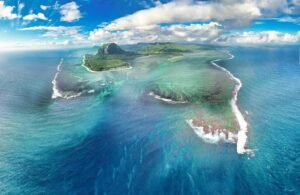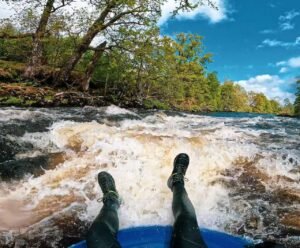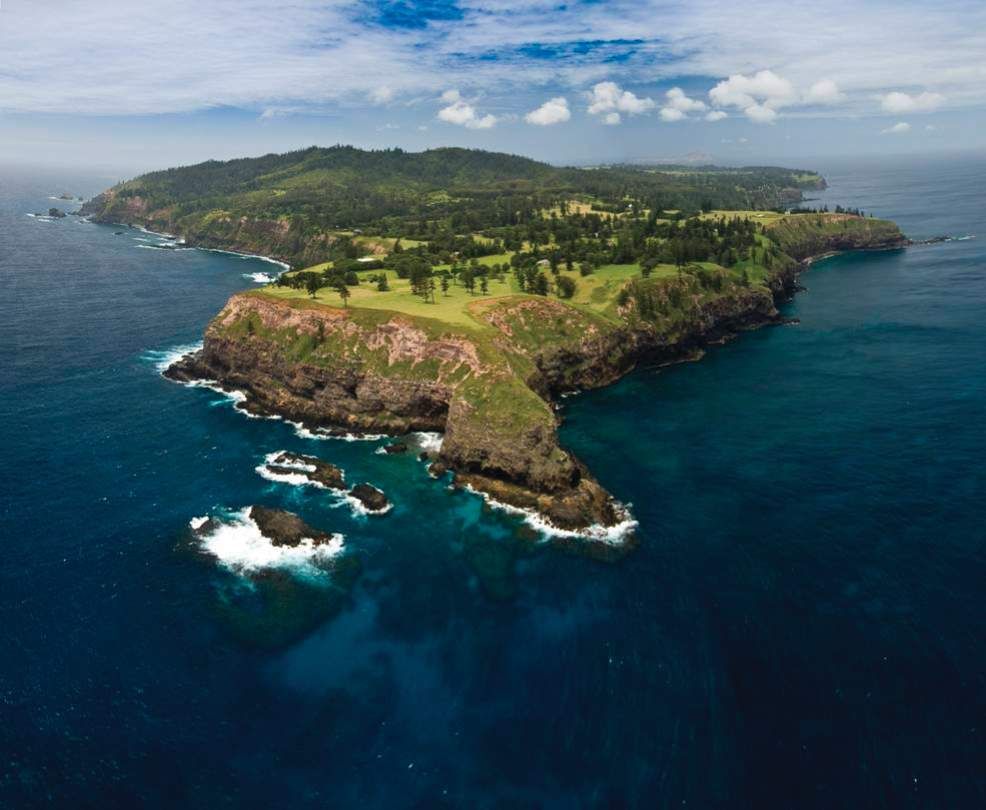
Some people have chosen to remain in smaller groups that are totally off the radar. These communities have withstood the test of time in near isolation. In fact, many residents have never left the small area of isolation they call home.
Palmerston Island
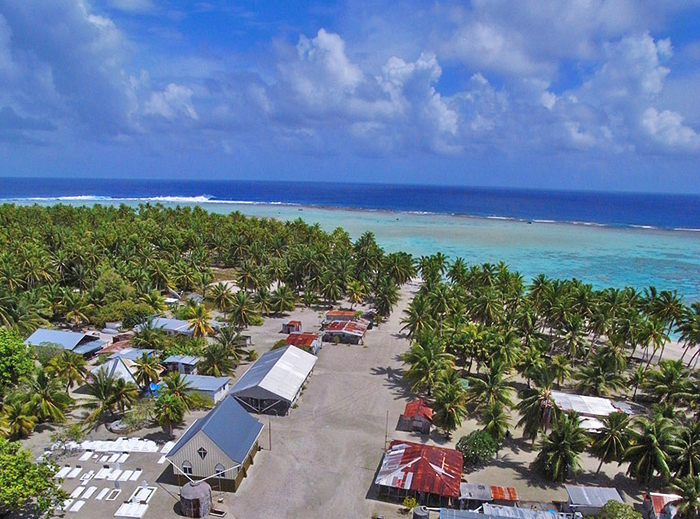
It is about 3,200 kilometers or 2,000 miles northeast of New Zealand, sits the tiny island of Palmerston occupied by a mere 62 people who are all from the same bloodline. Palmerston is one of the most isolated communities on the planet.
Discovery of Palmerston Island is credited to Captain James Cook in 1774, the 62 inhabitants of the island can be traced back to just one person, William Marsters as the first permanent inhabitant of the island. He took up residence there in 1863 with his Polynesian wife and her two cousins. After being granted possession of the island by Queen Victoria, Marsters took his wife’s cousin’s as his second and third wives. He and his wives had 23 children in total before his death in 1899. Today, all but three of the people on the island are direct descendants of William Marsters.
Life on the island is one of isolation and simplicity. There are no shops, banks or markets. Money is only used when buying and selling off the island or when ships come with supplies from the outside world. Trade between islanders is the only way to get what you need. There is no true water system, rainwater is collected for drinking. There are two public toilets available on the main street and electricity is only available for six hours each day. However, a new telephone station has been constructed to provide an easier connection to the outside world.
If someone wants to visit Palmerston as a guest, he will be welcomed with open arms. The Islanders love visitors and adopt any travelers as their own guests stay in the Islanders homes as there are no hotels. However, the journey will be grueling, Palmerston is about five hundred kilometers or 310 miles from the capital island of Rarotonga, it is two days sailing on Pacific Seas, boats going to the island are few and far between. So, if you are looking for the ultimate Island getaway Palmerston, may be for you.
Supai village, Arizona
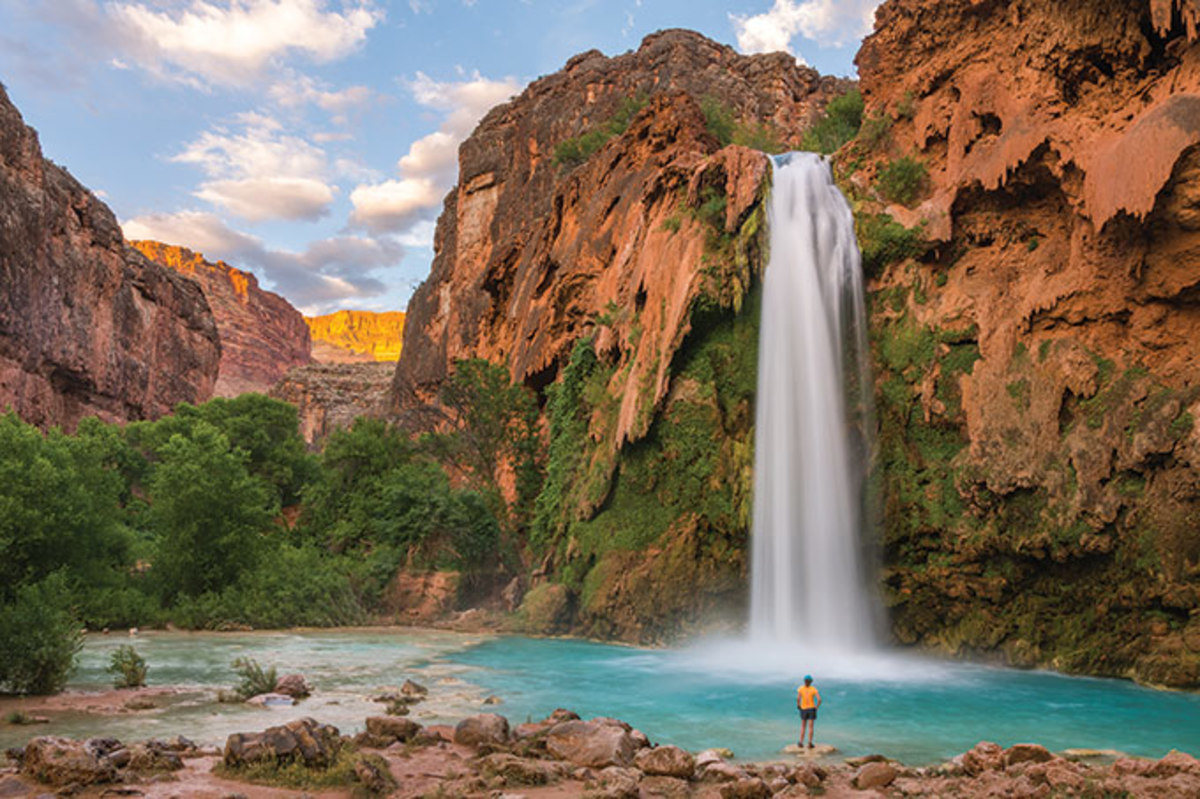
The Grand Canyon is one of the most visited vacation spots in the United States with its breathtaking views and desert dwelling critters but Canyon provides tourists with an escape from reality. However, many do not know about the secluded village of Supai, which is located in a side branch of the Grand Canyon known as “Havasu Canyon”.
The village consists of members of the Havasupai tribe they have inhabited the area for the past eight hundred years. The Havasupai people are also known as ‘the people of the blue-green waters’. Here, people thrive in this arid, solitary landscape, by practicing irrigation farming in the summer as well as hunting certain animals available during the seasons. The blue waterfalls and springs provide the Supai villagers with both their namesake and their water source for survival. The lands in which the Havasupai live is a protected reservation.
Just how secluded is Supai village, the 208 residents are the only people in the United States who still receive their mail and parcels by mule. A series of linked mules carry packages and mail to the village regularly, any mail leaving there also bears a postmark that is unique to Supai.
Tourists are welcome to visit Supai and its natural beauty but it will take some rugged skills and determination to get there. The village is located 56 kilometers or 35 miles from the tourist hub of the Grand Canyon and there are no paved roads to get there. The journey starts at the Hualapai hilltop from this point Supai can only be reached by foot, mule or helicopter. It is 13 kilometers or 18 miles one way to reach the bottom of the canyon where the village lies. Supai will remain a hidden gem in the American frontier.
Tristan Da Cunha
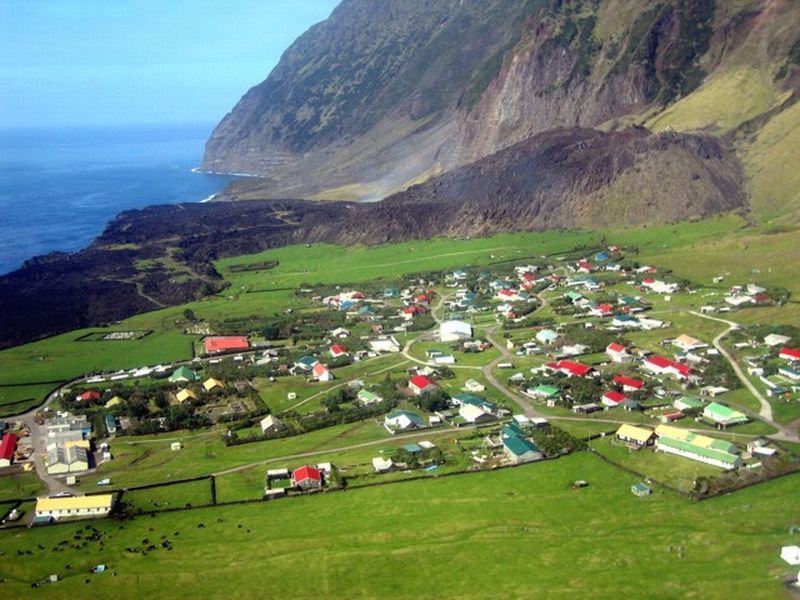
The world’s most remote populated island, both the archipelago and the main island in the group are named Tristan da Cunha. These islands are in the middle of the Atlantic. It lies 2,816 kilometers or 1,750 miles from South Africa and 3,360 kilometers or 2088 miles from South America. The nearest landmass to Tristan is Saint Elena which is a mere 2,430 kilometers or 1,510 miles from the island.
It was discovered by a person ‘Tristan da Cunha’ in 1506, unable to venture onto the island due to unsafe water, Tristan da Cunha named the main island and the archipelago after himself and took off. The first official mapping of the island was made by the French frigate ‘La Gorda Bursch’ 261 years later. No attempt was made during the expedition to land on the island.
The first true inhabitant of Tristan da Cunha arrived in 1810 when American explorer Jonathan Lambert landed on the island and proclaimed himself as its ruler. Due to the strategic positioning of the islands, they were annexed by the united kingdom in 1816.
Today, It is thriving with a population of 267 people. These individuals have access to many major amenities including a hospital with dental treatment and operating theatres as well as a grocery store. However, orders must be made weeks or even months in advance for grocery items as everything must be shipped to the island from the nearest location. Though modernity has taken over the remoteness of the island still causes many hardships. Traditional electricity is not available anywhere on the island instead of diesel generators are centrally located between cottages in the only town, Edinburgh of the seven seas.
Tristan Da Cunha seems like an introverts paradise without any worries or anxieties. However, if this seems like a great place to settle down be warned that the island is volcanic. Edinboro of the seven seas sits at the base of a volcano that last erupted in the 1960s. So, if you love remoteness, cows, and the threat of volcanoes it may be the right home for you.
Utqiagvik, Alaska
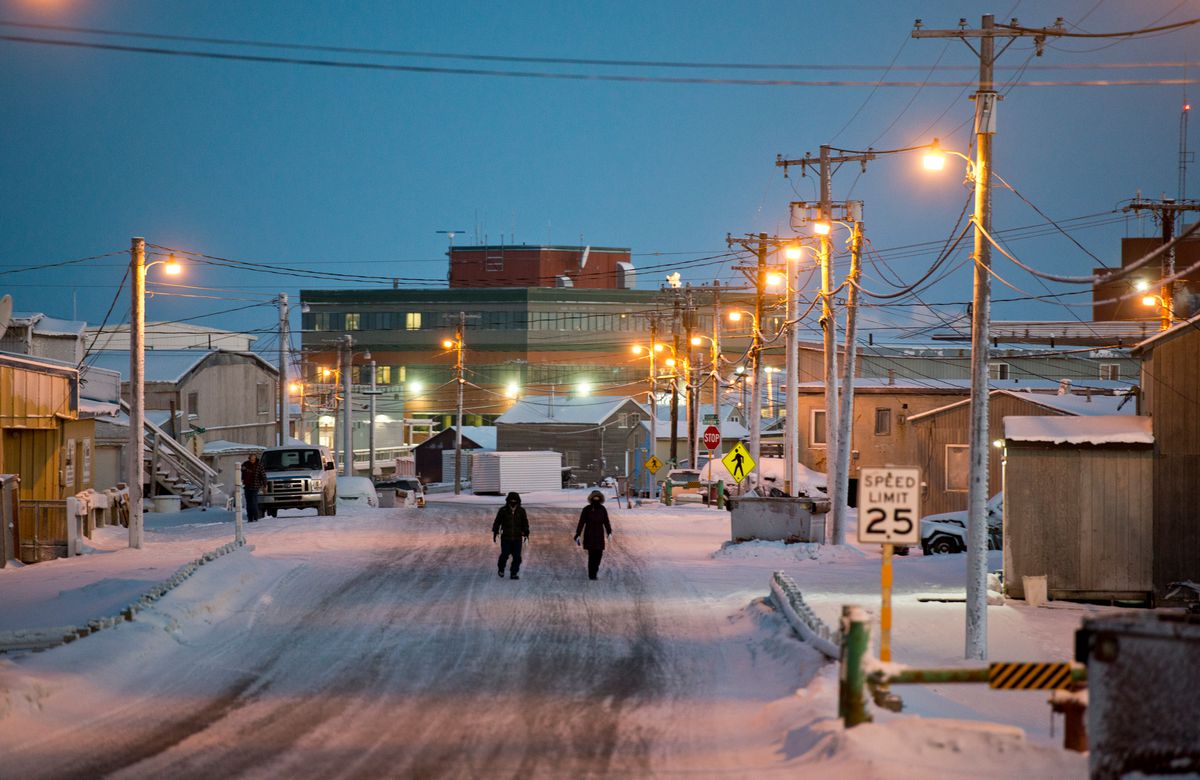
Utqiagvik is the northernmost city in America and the ninth most northern city in the world, formerly known as “Barrow” in Alaska. This town lies well above the Arctic Circle and is a very remote and cold town. Although the weather is extreme, archaeological evidence indicates that people have been thriving in the Utqiagvik region from as early as AD 500. The headland was explored in 1826 by Frederick Beachy and named for Sir John Barrow, the prominent British promoter of Arctic explorations.
The native, Inupiat tribe called the area “Utqiagvik” or place where owls are hunted. So, just how cold is it Utqiagvik, the city is built upon a layer of permafrost that is up to 400 meters 1,300 feet deep in places. The warm season in Utqiagvik lasts a mere 3.3 months with average high temperatures measuring 2 degrees Celsius, 36 degrees Fahrenheit. The cold season lasts 4.4 months and the average high temperature is (-16) degrees Celsius, 3 degrees Fahrenheit.
Along with the extreme temperatures, the people of Utqiagvik also deal with the polar night. Normally starting in November, the Sun sets in Utqiagvik and does not rise again for roughly 65 days. Nevertheless, the area’s 4429 residents thrive, over 60% is a new Piatt Eskimo even in the Arctic tundra these polar survivors have a great quality of life and modernity. Their homes are heated by natural gas from local oil fields, they also have modern water and sewer systems. Trash pickup is also available from the city.
The town has seven churches, various schools, and Illisagvik college. Communication is easy because there is a phone, mail, radio, cable, and internet. If you want to visit Utqiagvik, you can take advantage of hotels, restaurants, a dry cleaner, a bank, and a fur shop. Though modernity has a hold in Utqiagvik, the natives still take part in whaling and seal hunting to get them through the long hard winters. However, you can only get to this remote location by plane and it doesn’t come cheap. So, if you’re interested in extreme cold, remote solitude, and perpetual night it might just be the best place for you.
La Rinconada, Peru
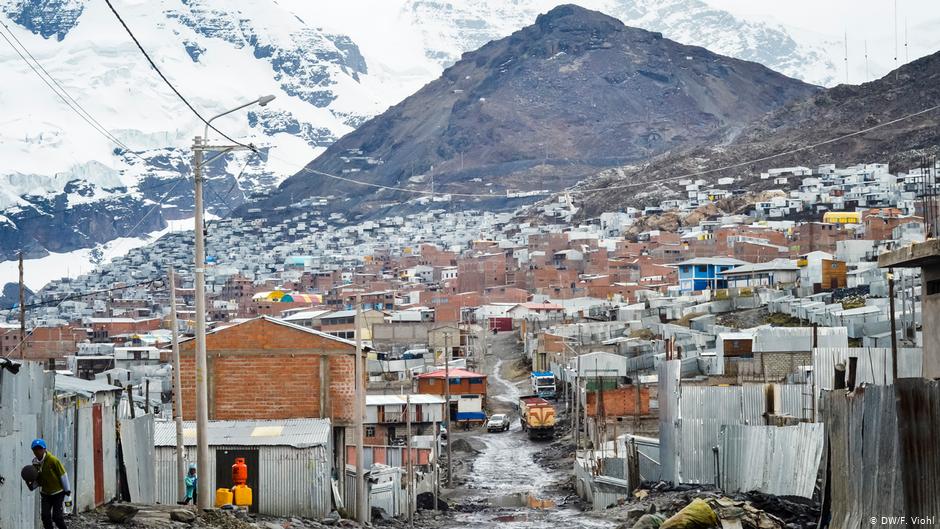
It is high in the Peruvian Andes, 64 kilometers or 40 miles north of Lake Titicaca lies the town of La Rinconada, Peru what makes this town so special, it is the highest human habitation in the world. It was built at a height of over 4900 meters 16,000 feet, lying at the top of Mount Ananea it experiences sub-zero temperatures for most of the year. At this remote altitude, visitors can expect to experience the effects of extreme altitude sickness including headaches, nausea, shortness of breath, and even death in some extreme cases.
Approximately 50,000 people now call this squalid city home beyond the isolated locale and freezing temperatures this town has no basic modern amenities and little infrastructure. It has no sanitation system and no plumbing, making the entire community one of Filth and destitution. Trash pickup is non-existent, most people bury their trash outside of town or simply leave it where it falls.
People living and working in La Rinconada also face treacherous conditions when coming in and out of their high-rise city, as the only roads leading into La Rinconada are as dirty as the city itself and iced over for most days of the year. But, there is a reason, why all these people live in a city of isolation and filth and the reason is gold and It was chock-full of gold. Between 2001 and 2009, the town boomed with a 230 percent increase inhabitation. Without regulations, the mines operate under an informal structure called the “Cachorreo system”. Miners work through the month for no pay. However, after their shifts, they can take home as much ore as they can carry but they never know how much gold is in the ore.
Isolated, filthy, poor, sad these are a few words to describe la Rinconada. This is one remote community that is not worth the struggle to visit even if the greatest fortune could be found in its hills.



